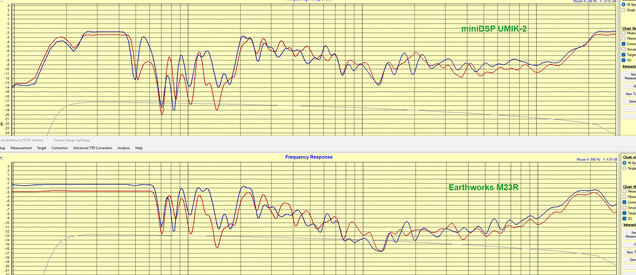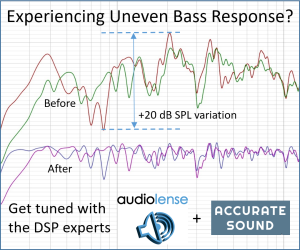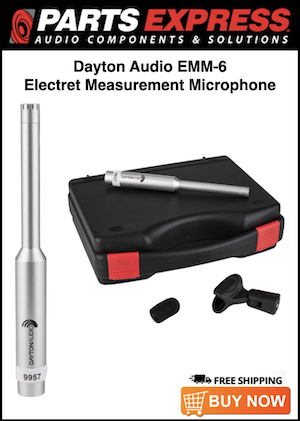I have a 2.0 setup in a difficult but acoustically well treated room. I wanted to improve or at least confirm my previous measurements done with a UMIK-2 USB microphone with a better measurement mic, that's why I bought an Earthworks M23R.
My audio interface is rather nice and robust, it's a RME Digiface AES (contains a Mic preamp).
With the UMIK-2 I used these devices in Audiolense: RME Digiface WASAPI for Playback and miniDSP ASIO for microphone input.
With the Earthworks I use RME Digiface ASIO for Playback as well as for microphone input.
I am using since quite some time two or three Target curves, which I like, also a few slightly different correction procedures.
After two days of careful measurements and trying different targets and correction procedures, I am confused and disappointed by the Earthworks M23R, but maybe I am missing a thing or two? All my correction filters based on measurements with the M23R are significantly (!) worse than those based on the UMIK-2. They are lifeless, rather veiled and dull.
I think the reason for this is the "hill" between 200 Hz and 10 kHz in the M23R measurement(s). This "hill" causes a large "valley" in the correction filter, which in the end might not help the sound. But I am only guessing and as I said... rather confused ;-)
(For both microphones I used the appropriate calibration files. Without using the calibration file the situation remains basically the same)
My audio interface is rather nice and robust, it's a RME Digiface AES (contains a Mic preamp).
With the UMIK-2 I used these devices in Audiolense: RME Digiface WASAPI for Playback and miniDSP ASIO for microphone input.
With the Earthworks I use RME Digiface ASIO for Playback as well as for microphone input.
I am using since quite some time two or three Target curves, which I like, also a few slightly different correction procedures.
After two days of careful measurements and trying different targets and correction procedures, I am confused and disappointed by the Earthworks M23R, but maybe I am missing a thing or two? All my correction filters based on measurements with the M23R are significantly (!) worse than those based on the UMIK-2. They are lifeless, rather veiled and dull.
I think the reason for this is the "hill" between 200 Hz and 10 kHz in the M23R measurement(s). This "hill" causes a large "valley" in the correction filter, which in the end might not help the sound. But I am only guessing and as I said... rather confused ;-)
(For both microphones I used the appropriate calibration files. Without using the calibration file the situation remains basically the same)





















